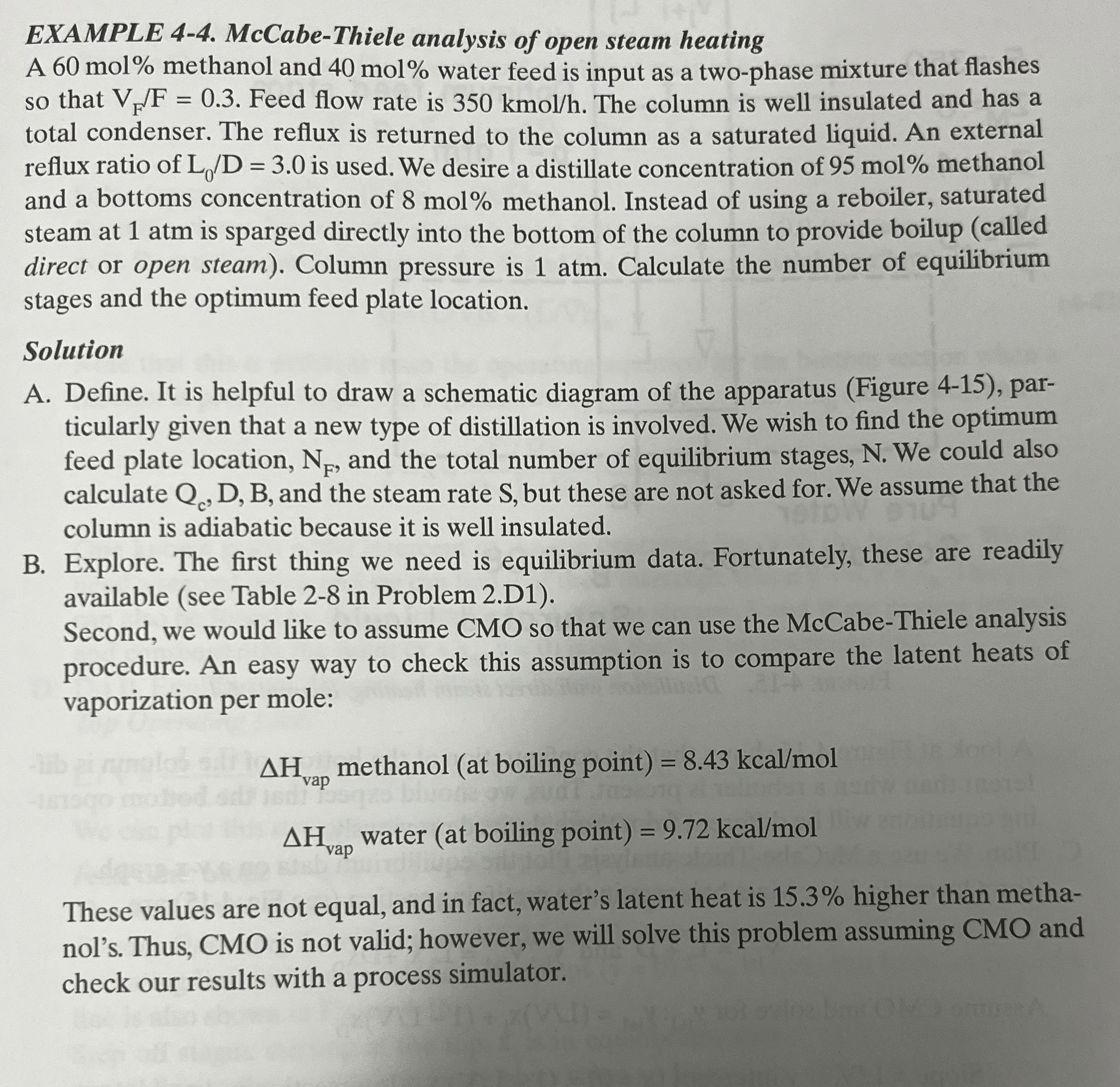Answered step by step
Verified Expert Solution
Question
1 Approved Answer
EXAMPLE 4 - 4 . McCabe - Thiele analysis of open steam heating A 6 0 mol % methanol and 4 0 mol % water
EXAMPLE McCabeThiele analysis of open steam heating
A mol methanol and mol water feed is input as a twophase mixture that flashes so that Feed flow rate is kmo The column is well insulated and has a total condenser. The reflux is returned to the column as a saturated liquid. An external reflux ratio of is used. We desire a distillate concentration of mol methanol and a bottoms concentration of mol methanol. Instead of using a reboiler, saturated steam at atm is sparged directly into the bottom of the column to provide boilup called direct or open steam Column pressure is atm. Calculate the number of equilibrium stages and the optimum feed plate location.
Solution
A Define. It is helpful to draw a schematic diagram of the apparatus Figure particularly given that a new type of distillation is involved. We wish to find the optimum feed plate location, and the total number of equilibrium stages, We could also calculate and the steam rate but these are not asked for. We assume that the column is adiabatic because it is well insulated.
B Explore. The first thing we need is equilibrium data. Fortunately, these are readily available see Table in Problem D
Second, we would like to assume CMO so that we can use the McCabeThiele analysis procedure. An easy way to check this assumption is to compare the latent heats of vaporization per mole:
methanol boiling pointkca
water boiling pointkca
These values are not equal, and in fact, water's latent heat is higher than methanol's. Thus, CMO is not valid; however, we will solve this problem assuming CMO and check our results with a process simulator.
Solve example with LD instead of by hand with McCabeThiele analysis. In addition to calculating the optimum feed plate location and the total number of equilibrium stages, also calculate Qc D B and the stream rate S

Step by Step Solution
There are 3 Steps involved in it
Step: 1

Get Instant Access to Expert-Tailored Solutions
See step-by-step solutions with expert insights and AI powered tools for academic success
Step: 2

Step: 3

Ace Your Homework with AI
Get the answers you need in no time with our AI-driven, step-by-step assistance
Get Started


